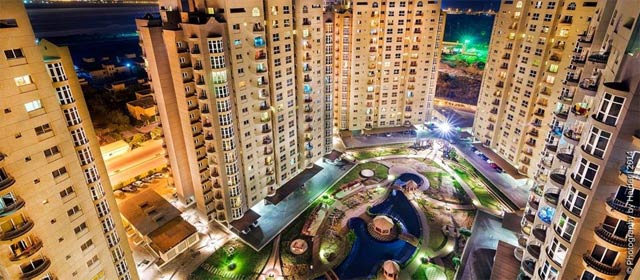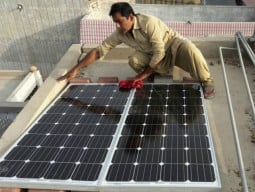
However, buying – read affording – a house is a difficult task. In Pakistan it has recently become even more challenging for two major reasons.
Ground becoming shakier for real estate sector
Firstly, property prices have sky-rocketed in the last three years, putting potential buyers in an awkward position of falling short on cash. Secondly, and closely linked with the first challenge, it is getting increasingly difficult to secure housing finance from lending institutions.
The first reason has more to do with a surge in business confidence since 2013 when power was transferred to an elected government. The security situation has since improved and a fundamental demand-supply gap has ensured prices remain on a growth trajectory.
These are positive reasons. However, with the second challenge, there is a need for corrective measures.
The House Building Finance Corporation (HBFC) – the only public sector housing finance institution with about 24% market share – has recently decided to ‘focus’ its energies on low-cost housing. The housing bank is now going to prefer clients who want to construct or buy homes worth up to Rs1.5 million.

However, the move jolted the construction industry as it fears the new strategy may discriminate against the middle- and upper-middle income segments. There is panic among leading builders, especially those who are about to complete their high-rise projects in big cities. Their fear is that they might not get HBFC financing due to shortage of funds that are going to be redirected to low-cost housing.
Real estate sector handed tax amnesty
“Middle and upper-middle income clients can easily get home loans from commercial banks. We now want to cater those lower-middle income segments that are usually not entertained by banks,” HBFC Managing Director Pervez Said told The Express Tribune.
One thing is sure — the HBFC has very limited resources and it may continue to receive bad press from different stakeholders.
Soon after taking over, the PML-N government announced that it would give incentives to the construction sector and promote low-cost housing, including the construction of 500,000 housing units in different cities. However, despite taking the Association of Builders and Developers of Pakistan (ABAD) – an organisation of over 800 builders and developers – on board, the government never showed an interest towards fulfilling its promises.
Housing finance of all banks and development finance institutions [DFIs] amounted to Rs62.96 billion at the end of January-March 2016 quarter, up 3.5% or Rs2.1 billion over the preceding quarter. The increase in the outstanding housing finance on a year-on-year basis, however, equals 15.4%, according to the State Bank of Pakistan (SBP) data.
The good part is that outstanding housing finance has registered growth for the ninth consecutive quarter (Jan-Mar 2016). However, despite tall claims of the central bank that it is trying to provide enabling environment for housing finance, housing finance remains miserably low in Pakistan with mortgage-to-GDP ratio of 0.5% at the end of 2015.
Since its inception in 1952, the HBFC has disbursed a total of Rs55 billion. However, HBFC MD says the average four-year annual loan disbursements of the housing bank remained Rs2.5 billion. Last year, the lender disbursed a much higher amount of Rs3.8 billion. Outstanding housing loans of HBFC amounted to nearly Rs14.7 billion at the end of December 2015, up 16.3% from last year.
Lahore's real estate market challenges new tax rules
This shows that there is a gradual increase in HBFC disbursements, but the construction industry believes there is still a huge demand-and-supply gap. Builders and developers say the government should inject Rs15-20 billion into the HBFC for significant growth in the construction sector.
There is no precise data that can ascertain the actual shortage of houses in Pakistan and most studies are based on estimates. However, according to a World Bank study carried out in 2009, there was a shortage of 7.5 million housing units in Pakistan, which is increasing by 0.35 million housing units every year.
It seems that the HBFC’s resources may continue to remain inadequate as there is an ever-increasing demand for loans. To control the situation by ending the debate on what economic segments should the HBFC serve, the government needs to increase the HBFC’s resources so that it does not discriminate.
Right now, it has decided that it is going to do just that — focus on low-cost housing and ignore a large part of the potential market. With limited resources, there is no way the HBFC can cater to its entire clientele.
The writer is a staff correspondent
Published in The Express Tribune, October 10th, 2016.
Like Business on Facebook, follow @TribuneBiz on Twitter to stay informed and join in the conversation.












































COMMENTS (8)
Comments are moderated and generally will be posted if they are on-topic and not abusive.
For more information, please see our Comments FAQ